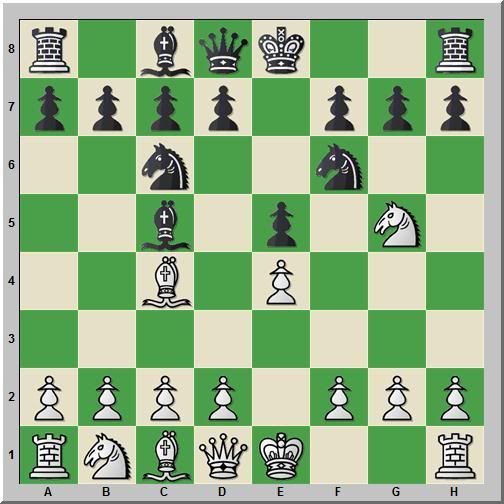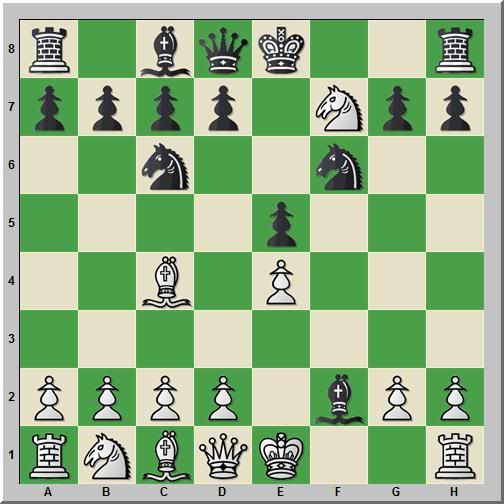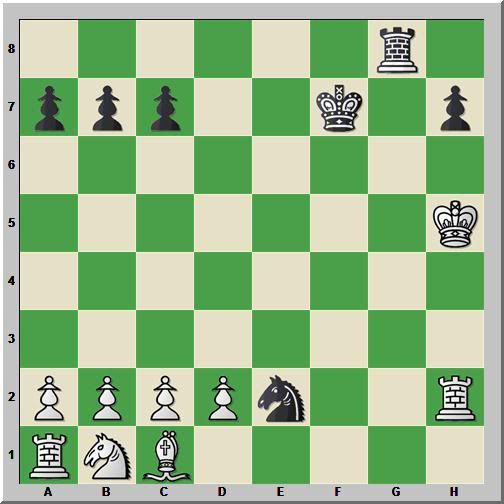The Italian Opening does not always lead to a quiet game.
1.e4 e5 2.Nf3 Nc6 3.Bc4 Nf6
Black invites White to become aggressive.
4.Ng5!? Bc5
4...d5 is more common and invites the Fried Liver Attack.
White to move

This position appears in the Knight Award Checkmates and Tactics problem set. There is not a single correct answer, but several ways to play it. I want students to find two:
5.Bxf7+ safely wins a pawn. After 5...Ke7 (or Kf8), White retreats the bishop to b3 or d5.
5.Nxf7!?
The aggressive and ambitious option. This move initiates a fun and interesting game.
5...Bxf2+
White to move

6.Kf1 seems the safer alternative.
6.Kxf2 invites disaster, but with accurate defense against the coming onslaught, White has chances and may even win.
In my chess clubs, we play out a variation or two on the demonstration board. I encourage players to spend time with these positions.
Study Material
Players whose parents help them access this blog get a bonus. Some study material: interesting games that were played with this beginning.
One of my favorites was played as a match between the former world champion and readers of the state newspaper in his nation, the Soviet Union. It has been imitated several times.
Pravda readers - Tal,Mihail [C57]
URS telechess Moscow, 1968
1.e4 e5 2.Nf3 Nc6 3.Bc4 Nf6 4.Ng5 Bc5 5.Nxf7 Bxf2+ 6.Kxf2 Nxe4+ 7.Kg1 Qh4 8.g3 Nxg3 9.hxg3 Qxg3+ 10.Kf1 Rf8 11.Qh5 d5 12.Bxd5 Nd4 13.Qh2 Qg4 14.Qxe5+ Be6 15.Bxe6 Qf3+ 16.Kg1 Ne2+ 17.Kh2 Qf2+ 18.Kh3 Qf3+ 19.Kh4 Qf2+ 20.Kh5 Rxf7 21.Bxf7+ Kxf7 22.Rh2 Qf3+ 23.Kh4 g5+ 24.Qxg5 Rg8 25.Qh5+ Qxh5+ 26.Kxh5 ½–½
Black to move

The game ended here, but in a Young Masters tournament in 1999, the contestants played it out a couple of moves more to illustrate the draw by repetition.
White's game collapses in the second example.
Small,Simon (2245) - Van Tilbury,Craig (2300) [C57]
Novi Sad ol (Men) Novi Sad (13), 1990
1.e4 e5 2.Nf3 Nc6 3.Bc4 Nf6 4.Ng5 Bc5 5.Nxf7 Bxf2+ 6.Kxf2 Nxe4+ 7.Kg1 Qh4 8.Qf1 Rf8 9.d3 Nd6 10.g3 Qd4+ 11.Kg2 Nxc4 12.dxc4 Qe4+ 13.Qf3 Qxf3+ 14.Kxf3 Rxf7+ 15.Kg2 Nd4 16.Na3 b6 17.Re1 Bb7+ 18.Kh3 d6 19.c3 Nf3 20.Rf1 Kd7 21.Be3 Raf8 22.Rfd1 h5 23.c5 bxc5 24.Nc4 g5 25.g4 hxg4+ 26.Kg3 Rh7 27.Kxg4 Nxh2+ 28.Kg3 Rf3+ 29.Kg2 Rxe3+ 30.Kg1 Rg3+ 31.Kf2 Rg2+ 32.Ke1 Nf3+ 33.Kf1 Nd2+ 0–1
This short and instructive draw is worth examining.
Massironi,Marco (2082) - Bove,Alessandro (2129) [C57]
ITA-ch U20 26th Bratto (7), 27.08.2003
1.e4 e5 2.Nf3 Nc6 3.Bc4 Nf6 4.Ng5 Bc5 5.Nxf7 Bxf2+ 6.Kxf2 Nxe4+ 7.Kg1 Qh4 8.g3 Nxg3 9.Nxh8 d5 10.hxg3 Qxg3+ 11.Kf1 Bh3+ 12.Rxh3 Qxh3+ 13.Kg1 Qg3+ 14.Kh1 Qh3+ ½–½
After 6.Kxf2 Nxe4+, Rybka recommends 7.Ke3. Two games featuring this move are a good place to begin exploring the possibilities.
Young,DH - Hull,JC [C57]
BCF-ch U18 Bath, 1963
1.e4 e5 2.Bc4 Nf6 3.Nf3 Nc6 4.Ng5 Bc5 5.Nxf7 Bxf2+ 6.Kxf2 Nxe4+ 7.Ke3 Qe7 8.Kxe4 d5+ 9.Bxd5 Qh4+ 10.Ke3 Qd4+ 11.Ke2 Qxd5 12.Qg1 Nd4+ 13.Ke1 Qe4+ 14.Kf2 Qe2+ 15.Kg3 Nf5+ 0–1
Johnstone,Glenn (2300) - Finegold,Benjamin (2490) [C57]
USA-op Dearborn (7), 1992
1.e4 e5 2.Nf3 Nc6 3.Bc4 Nf6 4.Ng5 Bc5 5.Nxf7 Bxf2+ 6.Kxf2 Nxe4+ 7.Ke3 Qh4 8.g3 Nxg3 9.hxg3 Qd4+ 10.Kf3 d5 11.Rh4 e4+ 12.Kg2 0–0 13.Qh5 Rxf7 14.Bxd5 ½–½














No comments:
Post a Comment